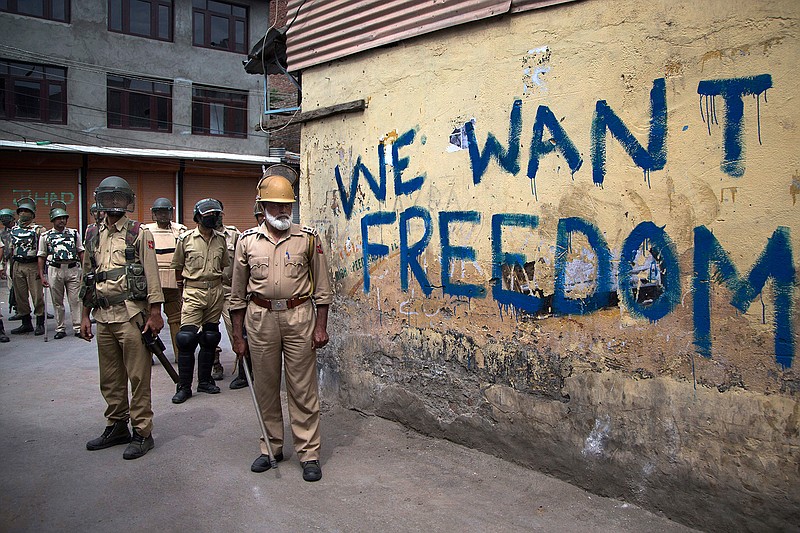Last week's brief skirmish between nuclear India and Pakistan over a terrorist attack in the Himalayan territory of Kashmir gave the world the shivers.
Tensions have diminished after Islamabad returned an Indian pilot downed on a retaliatory bombing run against an alleged Pakistani terrorist base. Yet the most plausible threat of nuclear weapons use still emanates, not from North Korea or Iran, but from those two contentious South Asian neighbors.
And the tensions revolve around their historic dispute over control of the spectacular mountains and valleys of Kashmir.
My trip last year to the Indian-controlled portion of Kashmir offered insights on the behavior on both sides that keeps the conflict boiling-and on why current U.S. policy toward Pakistan could help prevent an all-out war.
Driving through the sharp switchbacks and verdant valleys of Kashmir, on the National Highway to the capital, Srinagar, one comes to the Kargil War Memorial in the shadow of the Tololing hills. Built by the Indian Army, the memorial commemorates the soldiers and officers killed in the 1999 Kargil War, when Pakistani soldiers crossed the Line of Control that divides Kashmir between the two countries-and seized key peaks that gave them control over the highway.
The memorial is emotional, with pictures and plaques relating the life stories (in Hindi and English) of heroic officers and men who scaled and retook the peaks under fire. Families with children file through the exhibit and stroll up a flower-lined walkway to a pink stone monument to the fallen.
Yet times have changed since the Kargil war, which was begun by Pakistani military commander Pervez Musharraf. At the time, the Clinton administration intervened to prevent any potential escalation to the use of nuclear weapons and ultimately facilitated a Pakistani pullback.
However, the Trump administration has proved far less tolerant than previous Republican and Democratic administrations toward Pakistani prevarications. The administration has cut or frozen hundreds of millions of dollars of security aid to Islamabad in response to Pakistan's use of militant Islamist groups as proxies to attack India and the Afghan government. It also has encouraged an international task force to place Pakistan on a global terrorism-financing watch list.
If the task force blacklists Pakistan, the door would open to international sanctions that would further shake the country's wobbly economy. Such a threat may be why Pakistan's prime minister, Imran Khan, quickly ended the latest Kashmir crisis and vowed to crack down on militant groups.
Khan may also realize that provocations in Kashmir will no longer impel the United States to come to Pakistan's rescue. Even close allies like China and Saudi Arabia have indicated that they want Pakistan to act against extremists, which include the Jaish-e-Mohammed group that carried out the attack in Kashmir.
However, my Kashmir visit also showed the risk of Indian overconfidence on Kashmir, which leads to increasing repression against local civilians that alienates a generation of Kashmiri youths.
The Indian military presence is heavy visible on Kashmiri roads and in the capital and outlying villages, and roundups of young men are routine. With national elections coming in a month, Prime Minister Narendra Modi and his Hindu nationalist party have been beating the war drums to gain political advantage.
And with the Trump administration openly courting Modi, in hopes of enlisting (a skeptical) India as a bulwark against China, there is little prospect for reopening negotiations with Pakistan over Kashmir.
The world, and the Trump administration, may have little interest in Kashmir, but continued Indian repression will only feed resistance-and homegrown terrorism-among Kashmiri youth.
On the other hand, the swift end to the latest crisis and U.S. pressure on Pakistan provide an opportunity to restart talks on Kashmir after the Indian elections-if India is interested.
Might some Trump encouragement to his friend Modi on Kashmir provide a better path to that Nobel Peace prize than his efforts with Kim Jong Un?

